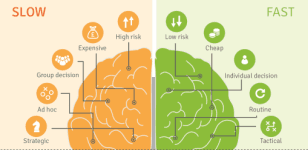
Customers are organizations’ biggest asset – without customers to buy products and services – there is no business at all. In recent years, customer experience has become a focal point for organizations, to encourage customers to spend more, pay a premium for that service, and recommend the supplier based on the experience it delivers. There is a strong correlation between poor customer experience and switching suppliers for better experience and service, and therefore understanding the journey that customers go through, and where improvements could be made – is now commonplace in many organizations.
What is Customer Journey Mapping?
To understand the current customer experience, it is essential to map the touchpoints that customers go through with the supplier. Through doing this, we can then build an understanding of where the customer might be facing points of delight or frustration, which can help organizations to drive improvement for customers.
A customer journey map is a visual representation of these customer interactions with an organization. To effectively build the map, it is crucial to step into the shoes of the customer to try and understand how our processes impact on the experience that the customer has with the supplier. That is – not only what might encourage the customer to make a purchase, but what emotions they are feeling at each stage of their journey with a supplier, as we know that emotions are a top driver of loyalty to a brand (even over aspects of the journey like ease of business).
It is a blueprint for the journey taken by the customer, marking all touchpoints. It should extend from touchpoints designed to raise awareness and interest – including advertising and marketing efforts, PR, etc. – through to the touchpoints associated with usage e.g. sales reps, accounts teams, support services complaints handling, etc. It should also extend to the cessation of the relationship with the company e.g. closing a bank account, switching to an alternative provider, etc. as the handling of this stage can be critical in turning around experiences and inviting future return to usage.
A Customer Journey Map (CJM) should therefore include:
- A flowchart or diagrammatical representation of the journey which customers take.
- All interactions and interfaces (touchpoints) between the customer and the company/brand
- Likely “pain points” in the journey i.e. areas where the customer is likely to experience difficulties or negative emotions.
- Key “moments of truth” i.e. areas where there is the opportunity to “make” or “break” the relationship.
Once maps have been developed, it is also common to then populate them further, to include:
- Identification of departments, regions, and people responsible for the delivery of the customer experience at each touchpoint (e.g. customer service, technical support, HR, sales and marketing, etc.)
- Linkages between touchpoints
- Emotions elicited and desired in the customer at each touchpoint.
- Importance ratings for each touchpoint. This can include looking at the internal perception of importance compared to customer measures.
- Performance of the company/brand at each touchpoint. As with importance, the gap between the internal and external perception can be identified.
Customer journey mapping is evolving to be more sophisticated in driving action. The use of AI in customer journey mapping is on the horizon, to allow us to more accurately predict customer behavior based on past data – which can in turn help organizations to improve customer experience and satisfaction through anticipating what the customer will need. It is certain that customer journey mapping will be even more relevant to drive customer satisfaction and retention in the future.
Why Conduct Customer Journey Mapping?
Most large corporations operate in ways which separate different functions of the service delivered to its customers e.g. ordering, technical support, complaint handling, warranty claims, general inquiries, etc. This is generally felt to be necessary to build expertise and manage operations. However, unless the various functions are joined up, the customer can feel this disconnect or even fall between departments or functions. By tracking and describing the customer’s experience at each stage of this ‘journey’, a company is able to:
- Deliver seamless, streamlined products and services that cut across departments within the company.
- Tailor services to meet the needs of both customers and the business.
- Understand the experiences, thoughts, and feelings of customers.
- Develop compelling propositions.
Customer journey mapping has obvious advantages within a company, not least in developing a customer culture and the internal buy-in with the brand. Customer experience journey mapping exercises focus the business on the customer. Simply by spending the time considering what the customer’s lifetime experience is with the company highlights the strategic positioning the customer has within the company, the customer culture, and the degree to which the customer is considered in service design and delivery. This can help to unite siloed departments or teams on improving the overall experience of the customer, and how they can work together to do so.
In recent years, we have become more attuned with the importance of empathizing with customers’ emotions throughout the customer journey, as positive emotions and feelings towards suppliers are directly related to future purchases from the supplier. Customers with a stronger emotional connection to the supplier as well as strong satisfaction, are more profitable for suppliers. Along the customer journey, we should think about ways to measure and enhance the customer’s emotional connection with the brand.
To do this, we might want to include on our CJM:
- The baseline emotional state of the customer
- Examples of what could enrich the experience at each stage (resulting in a more positive emotional response)
- Examples of what would be a poor experience at each stage (resulting in a more negative emotional response)
Many brand strategies are developed in the absence of the customer and yet it is the customer who lives the brand. Their perception of the brand comes not only from the messaging, imagery, and promotions, but also from the experience they have with the company and its products. Whilst this philosophy can now be seen in the imagery of the mass promotional campaigns of some leading brands, it must be backed up by the experience delivered when interacting with the supplier. A company that understands the customer journey in detail is able to design “ideal” experiences and orientate the operations and the people delivering these to engage its customers with the brand and build loyalty.
Moreover, we have seen that in recent years, especially since the Covid-19 pandemic, that customers’ expectations of the brands that they work with have increased. This has resulted in a gap between what the customer expects from the brands they are working with, and what can realistically be delivered by the supplier. To narrow this gap, it is critical to highlight where the gaps are largest between expectations and experience when customer journey mapping – organizations need to be prepared to meet expectations as closely as possible to avoid this ‘customer expectation gap’ growing larger.
Figure 1: The customer expectation gap
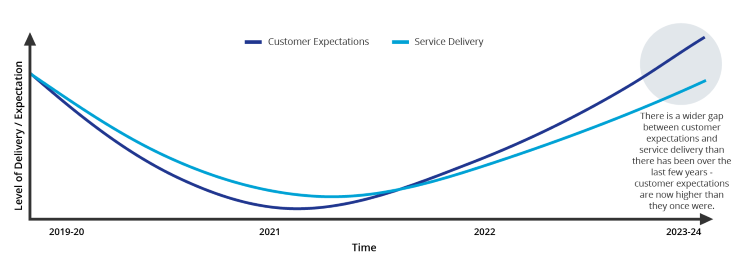
Problems and Pitfalls with Customer Journey Mapping
Customer journey mapping and touchpoint analysis is not without its problems. Knowledge and perceptions, both internal and external, are required to develop the Customer Journey Map, particularly in more complex B2B markets. Pitfalls which can be experienced when embarking on the process can include:
- Getting buy-in from senior management.
- Getting co-operation from staff who are responsible for the various elements of the customer journey (and aligning on actions based on customer journey mapping)
- Availability of resources to undertake the process, and drive action based on research findings.
- “Blank sheet syndrome” – having difficulty getting started.
- Lack of understanding of customers’ emotional connection with the brand and how to tap into this.
- The complexity of customer journeys – every customer can take a different journey, so maps can be complex!
Types of Customer Journey Maps Used in B2B Markets:
Customer Journey Maps can take several forms, depending on the needs of the business and the extent to which business processes are incorporated into the map.
Typical customer journey mapping:
A map that provides a strategic overview of the stages of the B2B customer journey, along with the component B2B touchpoints where a customer can interact or engage with the company at each stage of the journey.
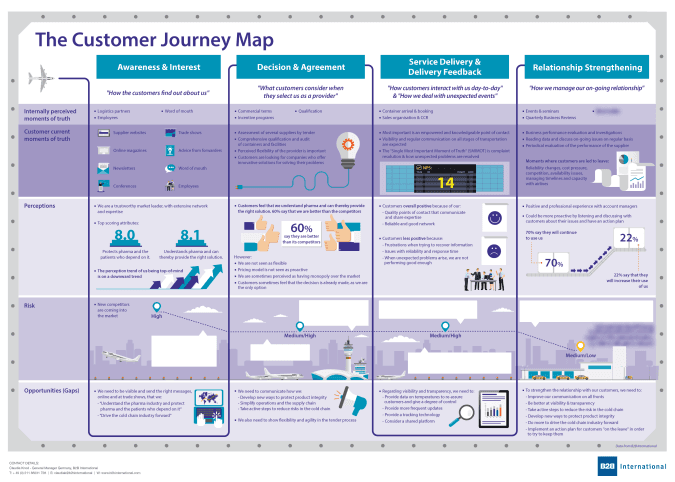
Tactical customer journey mapping:
The tactical B2B customer journey map focuses on a particular touchpoint (or cluster of B2B touchpoints) to highlight the journey that the customer goes on at that stage. This is particularly useful when looking at an important (or painful) touchpoint where performance needs to be at a high standard. Tactical maps can also be a useful tool for training teams that are responsible for a particular stage of the customer journey.
The performance map is similar to the tactical journey map, though it goes into more detail about the performance at each step of a process, and provides key recommendations at each stage. These are invaluable when identifying “pain points” and “bottlenecks” for the customer, and identifying how processes impact on customers. Therefore, they can be very useful for circulating information to those responsible for making the improvements on a day-to-day basis. These maps can also be helpful to design touchpoint research or surveys, to measure performance trends at the ‘painful’ touchpoint.
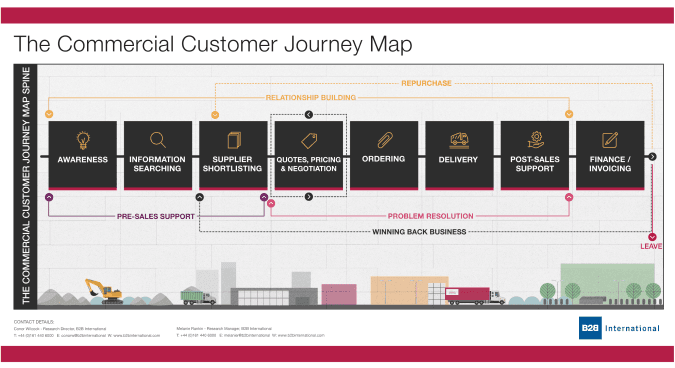
The Customer Journey Mapping Process
A customer journey map details all the individual touchpoints and interactions that customers have with a specific business.
Whilst all customer journey maps are unique to a business and its different customer groups, the process in creating these journey maps is broadly the same. If an end-to-end customer journey map has not been created, then it can be useful to map this out starting with how a customer becomes aware of a business or brand (such as through the website or a word-of-mouth recommendation), right through to service delivery and ultimately, what happens at the point at which a customer wants to exit the relationship or indeed, return and continue doing business. It might even be useful to consider the emotions and the processes that the customer goes through before they start to research brands (e.g., what problem(s) would the product or service be solving?).
Alternatively, a business may want to instead focus on one part of the customer journey (rather than the end-to-end journey) to understand this better and to explore this in more detail. As an example, if a business is happy with the sales process upfront but is more concerned about understanding the after-sales customer experience, then it may wish to build a map to explore specific interactions that occur at this point in the journey to examine where they are performing well, where there are potential problems or customer “pain points” and which departments are responsible for owning each of these specific customer interactions or experiences.
A key point to bear in mind is that the focus should always be on the customer, i.e. the customer journey map must be produced through the lens of a customer. In other words, it should represent the interactions the customer sees and experiences, rather than the internal processes that may occur behind the scenes within a business, which the customer does not see. For example, a customer may order a product for delivery, but they might not see how that order is specifically processed by the organization internally.
Creating the customer journey map
Depending on the industry in which a company operates, the range of its operations and the type of products and services it offers, the starting point will be to define the different groups of customers and to establish how different their “journey” with the company can be. Typical approaches to customer experience journey mapping here are to segment B2B customers on firmographics (i.e. classifications which make them different such as geography, age, SIC code), behaviors (i.e. what they buy) or needs (what they are looking for). This exercise is required before any journey mapping can take place. It may even be the case that these customer groups are overseen by different departments within the organization; in some cases, it makes sense to create multiple customer journey maps to avoid data overload.
The next step is to map the journey of each of the customer segments from end to end, detailing all the customer touchpoints with the company, and the customer responses to these.
The key overarching stages of the customer journey form the “spine” of the customer journey map. Under each key stage of the “spine” is where you list all the individual touchpoints or interactions a customer may have at that stage. Touchpoints may have connections with different stages of the “spine”, depending on the journey that the customer is taking.
As an example, under the “awareness” stage of the spine, the individual interactions a customer may experience in becoming aware of the brand may include some or all of the following:
- The company website
- Social media
- Trade publications
- Word-of-mouth recommendations
- Branded vehicles or delivery trucks
- Seeing the brand at sponsored events
Post-it notes and flip charts (or similar) are useful for capturing all this information. We would always advise that one post-it note is used for each touchpoint, as when doing this as an internal group exercise, then you will likely want to add or remove individual touchpoints, or potentially move these around or group them together. The key here is to keep reminding yourself that these touchpoints should all represent experiences through the eyes of the customer and so if a customer does not experience it (i.e. it’s an internal process they do not see), then it should not be included.
Heat-mapping performance
With multiple touchpoints and interactions mapped against each key stage of the “spine”, a customer journey map can shed light on the hundreds of specific interactions a customer can have with a business. Knowing what these are is a vital basis for formulating a plan or allocating resources appropriately towards effectively managing the customer experience across these different interactions.
However, a useful exercise in helping a business understand where attention is required, is to heat-map performance of these touchpoints. Once again, it’s important to put yourself in the shoes of the customer and then decide (either in groups or individually) which touchpoints can be classified into the following:
Customer pain points: Those touchpoints where there are challenges faced by the customer or where a business feels it fails to meet customer needs and expectations now. This point is important given how crucial customer emotion and brand connection is for customer retention.
Moments of delight: On the flip side, those touchpoints where a business feels that it delights customers by doing a good job or exceeding their needs or expectations.
Moments of truth: The touchpoints which are the most important or critical because they have the most impact on the longer-term loyalty of a customer. These points in the journey map can simultaneously be pain points or moments of delight.
When heat-mapping, it is not necessary that every single touchpoint is classified into one of the above and some may be left blank because they could be somewhere in the middle – neither a pain point nor a moment of delight. Equally, it is ok if some touchpoints are marked as a pain point and a moment of delight as well as a moment of truth, since this might represent that this touchpoint is important, but there are extreme inconsistencies in the experience of the customer here.
Of course, this exercise captures an internal perspective only, so it’s important to also test this out by speaking directly to customers. By doing this, it can be a powerful catalyst for change to conduct gap analysis on what we think internally versus what customers feels in practice. These insights can be used to help a business prioritize its resources on where these are needed most and where these could have the most positive impact on longer-term customer loyalty.
To overcome the barrier of the mapping exercise being based on internal views only, validating the customer journey map by speaking to customers allows us to better understand the sentiment that customers feel at the various stages of the customer journey, as well as giving us the ability to understand variations in the decision-making unit at different points in the customer journey. We can ask customers about changing dynamics in the decision-making unit throughout the journey, as well as when something goes wrong, for example. Customers may not travel through a linear customer journey map, so it is useful to understand discrepancies and variations in the customer journey taken, and the impact of these on the customer.
The role of internal employees and customers in customer journey mapping
Customer experience journey mapping can be done using a variety of methods which engage stakeholders involved in the process, and ensures their input into the development of the maps. A combination of workshops, staff interviews or focus groups, and customer interviews are normally used. These are then validated externally with customers (current, potential, and sometimes lost) to ensure the maps encapsulate the customer experience, and no critical touchpoints are missing.
Sessions can be conducted either in-person or virtually, so that we can capture as much knowledge as possible, even when teams are spread across the globe. We can use virtual whiteboards to map the journey, and encourage participation from everybody in the session. There is often some debate on what the journey looks like when sessions are conducted, whilst teams try to align on what the experience of the customer looks like, how they experience the journey, and which touchpoints are painful, positive or moments of truth.
Internal workshops (usually senior management) can help to:
- Establish a high-level view of the customer journey
- Establish buy-in at senior level
- Start thinking about things from the customer’s point of view
Internal interviews (usually departmental) can help to:
- Validate the high-level map
- Ascertain more touchpoints at particular stages
- Understand pain points and important touchpoints
Customer (current and/or lost) input – interviews and focus groups can help to:
- Validate the journey both in terms of stages and touchpoints
- Understand important touchpoints for customers
- Understand pain points for customers
- Understand gaps in internal vs. external perception
- Highlight expectations so we can estimate the customer expectation gap
- Understand feelings at each stage of the journey (when things go right, and when things go wrong)
- Demonstrate how decision-making units can change throughout the customer journey
Visualizing the Customer Journey Map
As customer journey maps can be complex, it is critical to design a clear visualized map that can be understood and used across departments.
There are a variety of ways to design the customer journey map to make the data simple, clear, and actionable. You may choose to use:
-
Large posters which can be placed in offices or other places of business to encourage engagement of all staff in the customer experience
-
Booklets which can focus on different personas or customer types through the customer journey
-
Excel spreadsheets or detailed tables of the customer journey (especially for customer experience teams who need the detail to drive improvement in the customer journey)
-
Digital outputs such as interactive infographics or videos, which can be shared across teams and/or regions. These outputs are especially useful now with online and hybrid working being common practice – staff can still be engaged in customer journey and experience improvement without being in a physical workspace.
The Value of Customer Journey Mapping & Challenges in B2B Markets
Customer journey mapping is just one stage in the move towards a customer centric approach. It marks the starting point; placing the experience of the customer at the heart of what the company does and how it operates. It provides a single overview of how customers interact with the business, focusing the company’s thinking on the customer and how the service appears from an external perspective. It is all too easy for large corporations to think in terms of departmental tasks, and so it facilitates cross-departmental working to understand the impact on the journey for the customer, and consider the “desired” emotional response from the customer at each point (as well as the impact if this desired emotional response is not achieved).
However, customer experiences, rather than being neat and linear, are often convoluted and complex, particularly in B2B markets where tendering, multi-site requirements, and technical product and service requirements often define journeys. These complexities can confound the customer journey mapping team, resulting in maps which are either overly complex or overly simplified, failing to capture the most important B2B touchpoints from the customer perspective and the emotional response to these from the customer. Resultant actions can then be process- rather than experience-driven.
The outputs from customer experience journey mapping deliver a tool for identifying outstanding and problematic areas, as well as “delight” and “choke points” in the journey. Using the customer experience management (CEM) process cycle (see below), the next stages are to design the “ideal” experience, put in place the processes and people addressed to deliver it, and develop a feedback mechanism to measure progress. As a result, valuable resources can be targeted where they will have the greatest impact for the customer coupled with efficiency for the business.
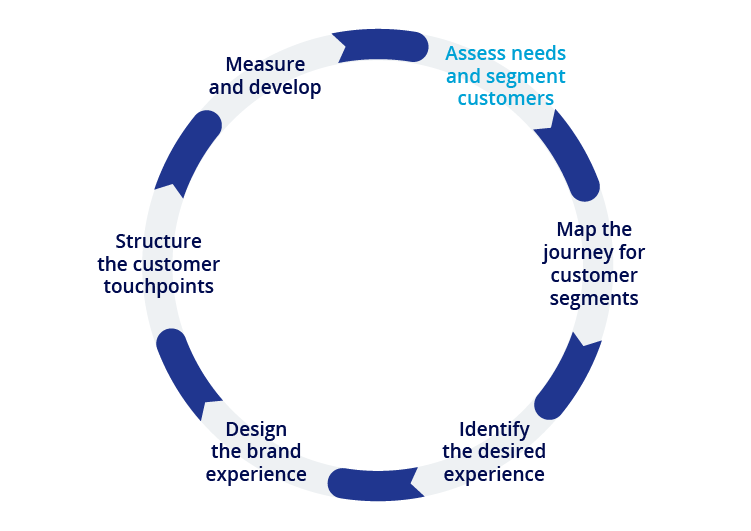
Customer Journey Mapping Best Practices
Customer journey mapping is an excellent tool to help an organization redesign its customer experience. It can help an organization piece together the current structures and processes affecting the customer and, by listening to customer feedback, identify gaps from the ideal experience. However, customer journey mapping is not an easy process, and getting it wrong can ultimately leave you with a lack of direction. Below are 5 tips to ensuring a successful project:
-
What does success look like?
You need to be upfront and clear about what your true objective is for undertaking the project, and this needs to be aligned within the business. This makes sure that the customer journey mapping work stays focused. Customer journey mapping can capture a wide range of information, and therefore it is important that the ultimate goal is kept in mind during the initial planning stages.
-
Identify complexities early
You need to think about your business and whether any intricacies in the way you operate will affect the journey mapping process. For example, different product groups or different customer segments may have different journey maps. The journey mapping exercise needs to take these into account, and it could be appropriate to design different journey maps to take these into account. Think about your customer segments before mapping starts!
-
Preparing for the workshop
Ahead of the workshop, enough groundwork needs to be done to make the customer journey mapping exercise run smoothly. You may want to hold stakeholder conversations ahead of the workshop to make sure there is internal alignment. You also need to ensure all of the right people are going to be present at the workshop – a healthy cross-section of different teams who are knowledgeable about the customer. You also want to have the right exercises in place that will ensure your output contains everything you were looking for. An interactive online whiteboard can be a useful tool to collaborate and get some ideas floating around before the customer journey mapping workshop itself.
-
Validating the customer journey map
As well as gathering the internal view, it is important to speak with customers to learn more about the processes from their experiences. It is often only necessary to do a small number of depth interviews to achieve this. Again, looking back at ‘what does success look like’ will inform the design. You may only need to speak to customers about a certain element of the journey, or speak to certain types of decision-makers to gather an understanding of customer sentiment, and identify where improvements can be made.
-
Visualizing the output
We would recommend that much consideration is given to the final output. Ultimately this is what you and your colleagues will be using to improve the customer experience. There are many creative ways that the map can be visualized – from giant posters, booklets, excel spread sheets or videos. It needs to be easy to understand, easily shared and can generate the actions you want.
Closing Thoughts
As a key element of Customer Experience Management, customer journey mapping is a “step back” exercise, and one which affords the opportunity to design truly innovative experiences which differentiate. It has real value in engaging staff at all levels within a business with its customers and their experience of the company and brand.
Customers are the greatest advocates of a brand or specific product or service: they tell stories and they make recommendations. They have the power to infect others with their enthusiasm for adoption, but also have the ability to influence against adoption, and hence focus on them is essential for long-term strategic growth.
Increasing customer expectations mean that it is more important than ever to understand customers’ emotions, behaviors and needs throughout the customer journey, to avoid increasing the gap between their expectations and what suppliers can realistically deliver. Understanding the customer journey in detail means that customers’ behaviors and next steps can be anticipated, and an experience can be designed to delight the customer.


